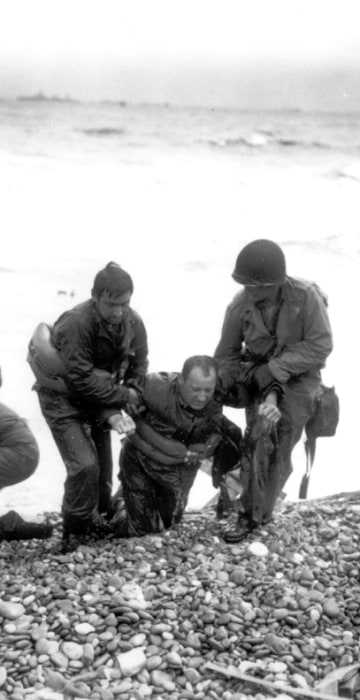
World
75 years ago: Photos from the D-Day invasion
In the early hours of June 6, 1944, more than 150,000 allied troops set off to begin the assault on Normandy.
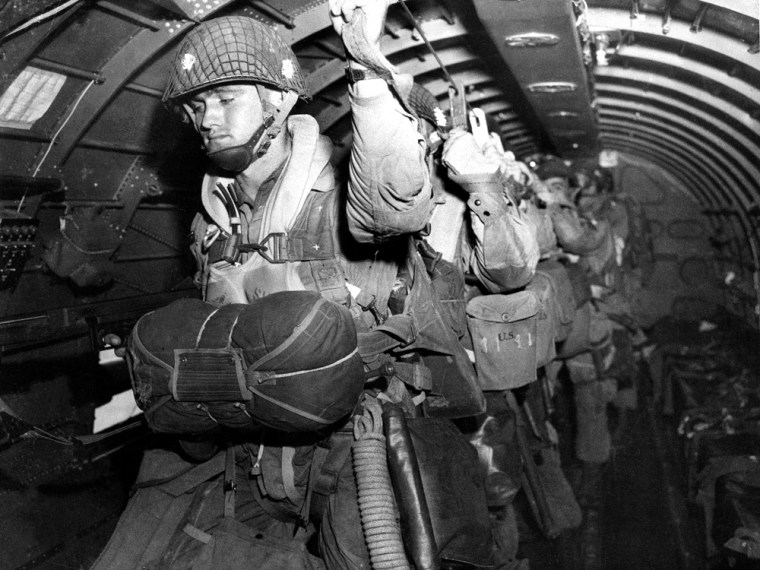
From the air...
U.S. paratroopers fix their static lines ahead of a pre-dawn jump over Normandy on D-Day.
The parachute troops were assigned one of the most difficult tasks of the initial operation -- a night jump behind enemy lines five hours before the coastal landings. The decision to launch the airborne attack in darkness instead of waiting for first light remains controversial.
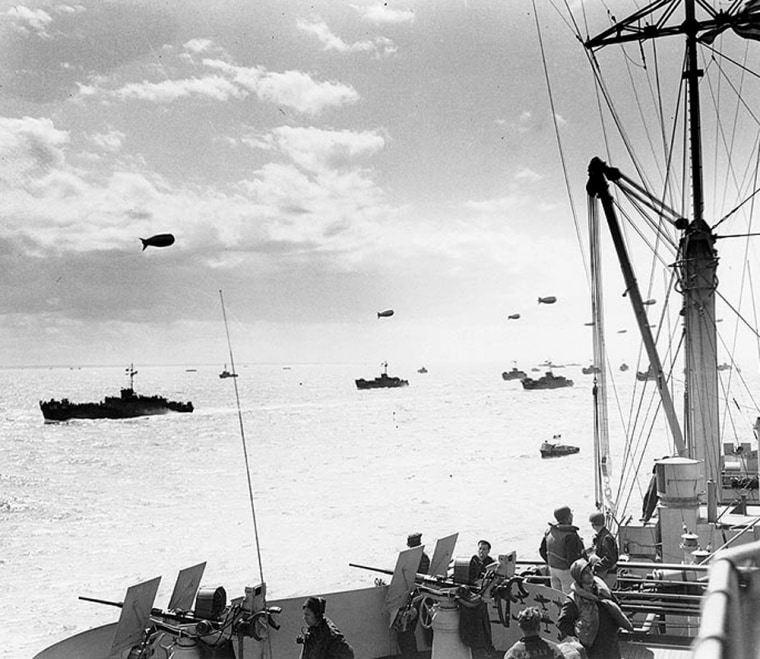
From the sea...
A convoy of infantry transport ships head toward the Normandy beaches on June 6, 1944, as seen from the USS Ancon. Barrage balloons, which defend against attack from low-flying aircraft, float overhead.
The invasion, codenamed Operation Overlord and commanded by U.S. General Dwight D. Eisenhower, remains the largest amphibious assault in history and involved almost 7,000 ships and landing craft along a 50-mile stretch of the French coast. It ultimately led to the liberation of western Europe from the Nazi regime.
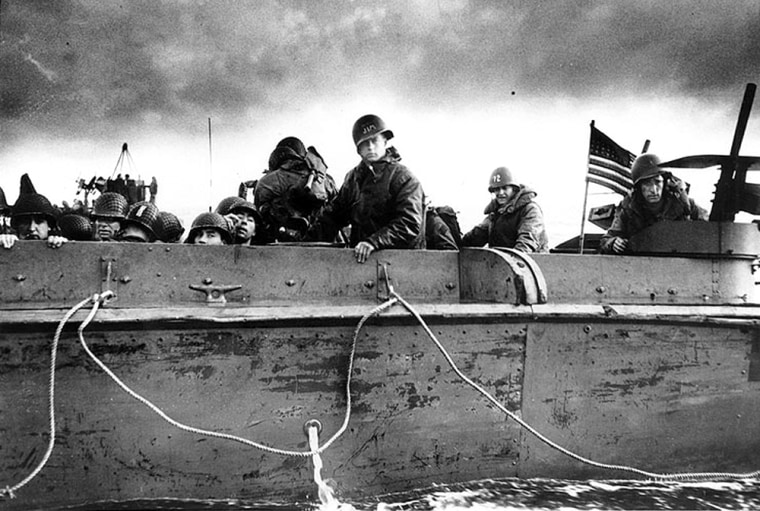
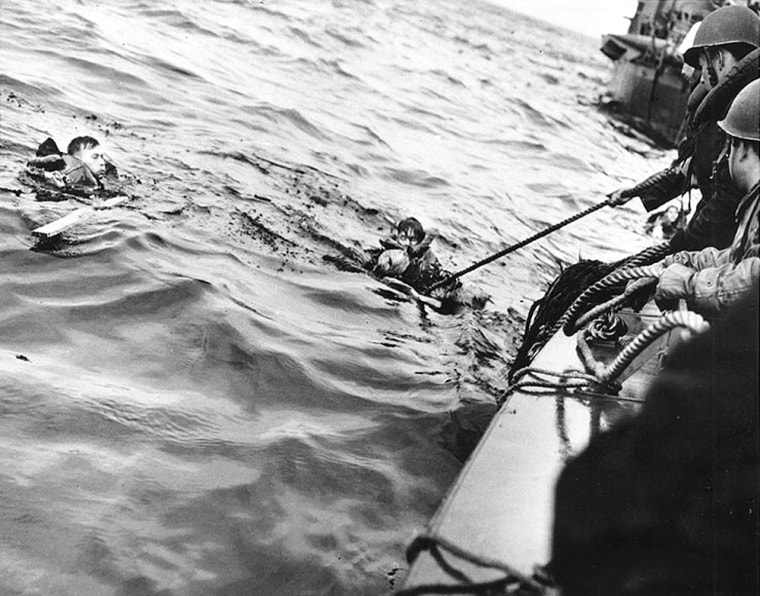

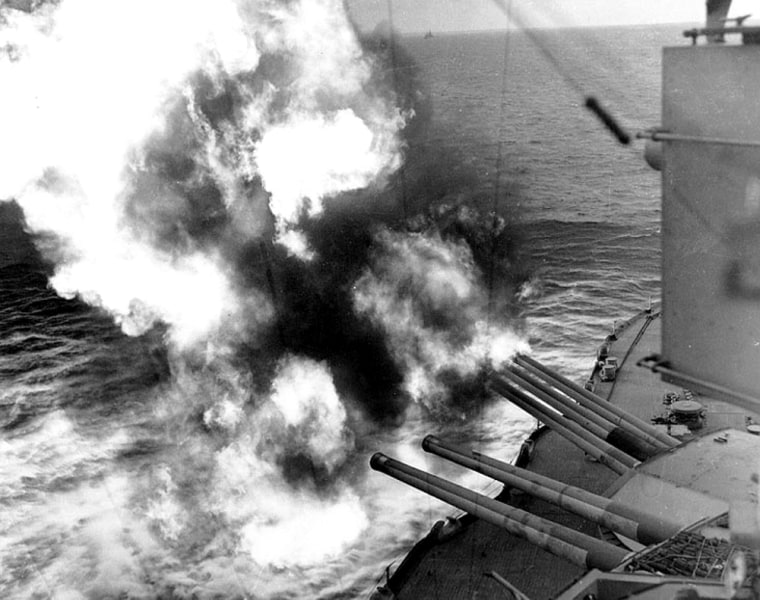
Forward guns
The USS Nevada fires on shoreline positions during the landings on Utah Beach.
The Nevada was the only ship present at Pearl Harbor and the Normandy invasion.
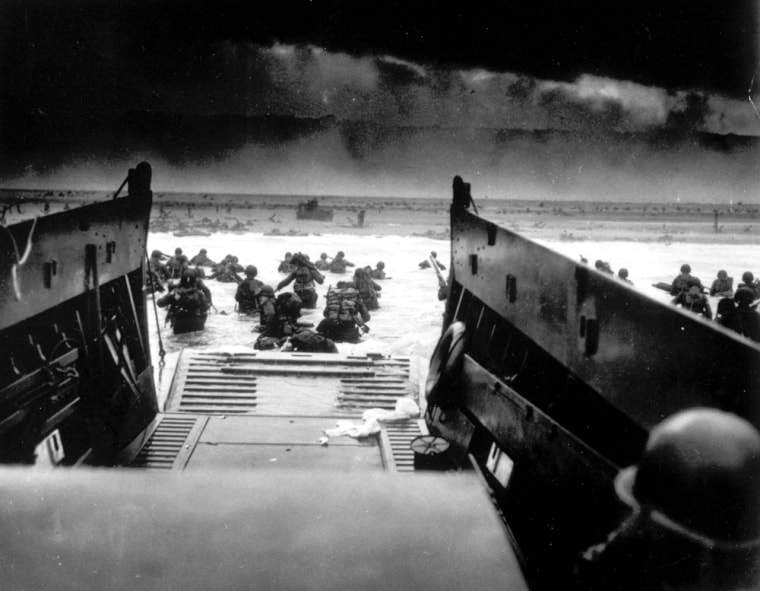

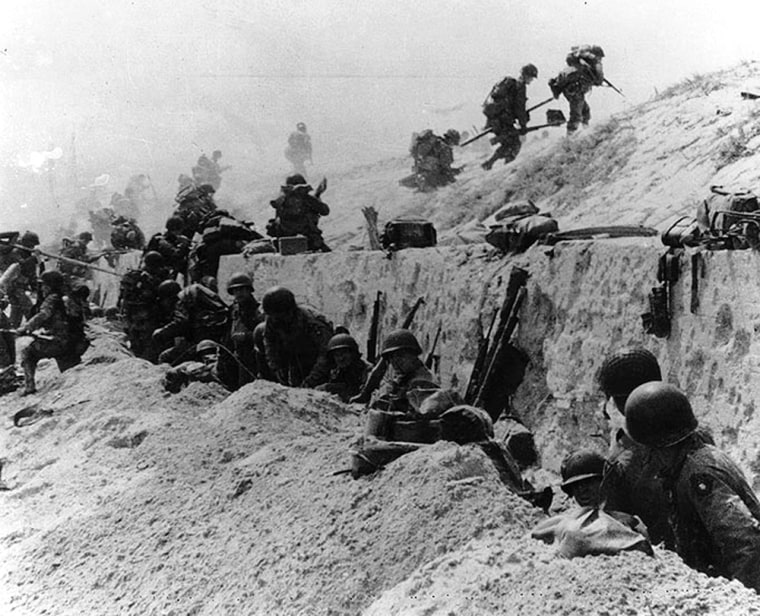
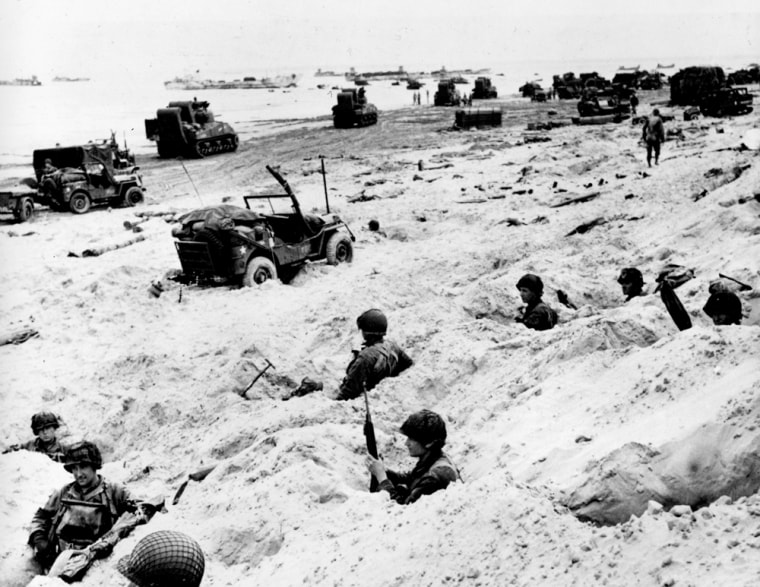
Foxholes
American soldiers of the Allied Expeditionary Force sit in the cover of their foxholes as they secure a beachhead during the initial Normandy landing operations.
In the background, amphibious tanks and other equipment crowd the beach, while landing craft bring more troops and material ashore.
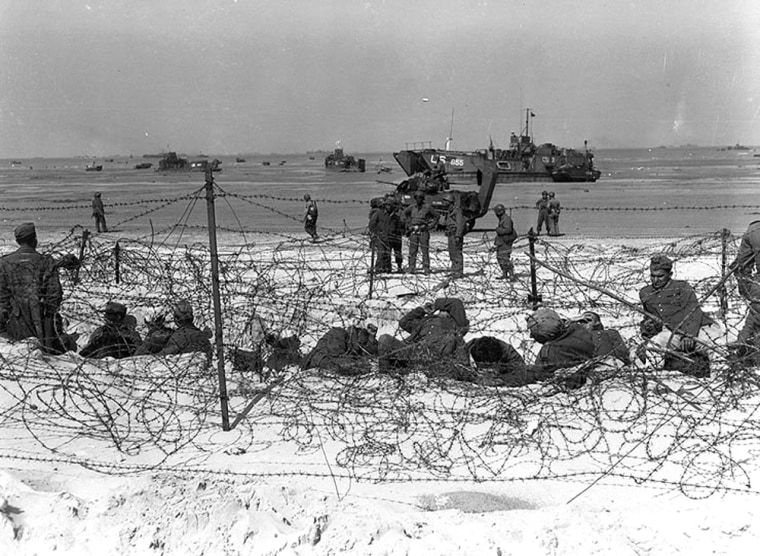
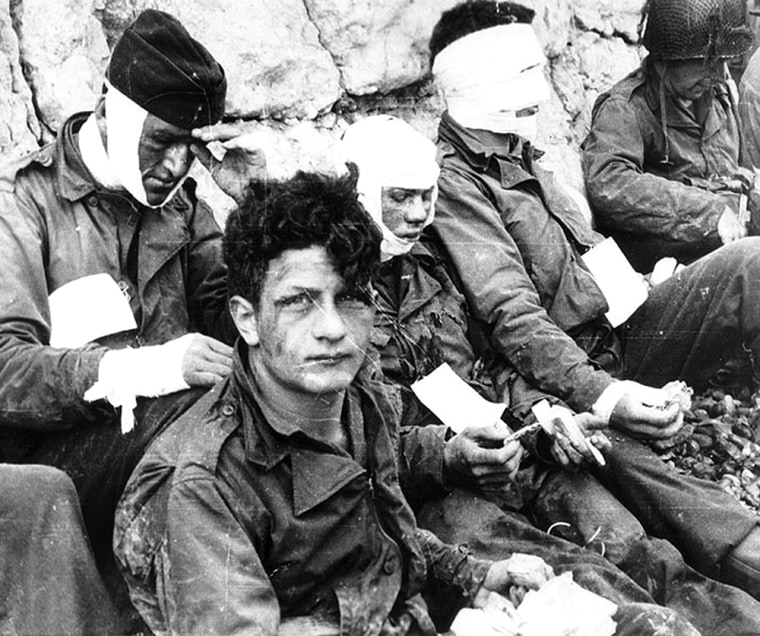
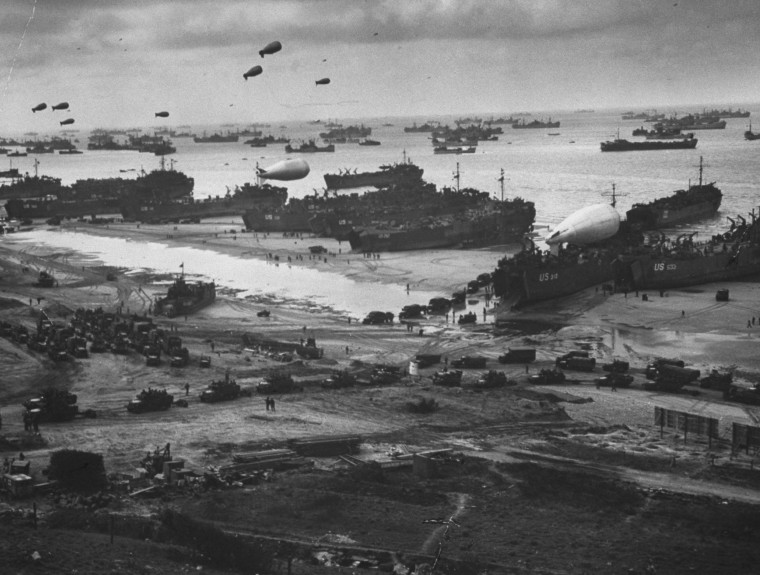
The next day
A massive landing and deployment of U.S. troops, supplies and equipment on the day after the victorious D-Day action on Omaha Beach, Arromanches-les-Bains, France.